Cleanliness lesson: how to remove efflorescence on paving slabs using improvised and store-bought products
In this article, we will tell you about various improvised and store-bought products that will help you easily and effectively remove efflorescence from paving slabs.
What is efflorescence and why does it appear?
Efflorescence is a white coating on tiles that appears shortly after it is laid. Salts are of carbonate and sulfate origin. Their formation is natural on cement-based surfaces.
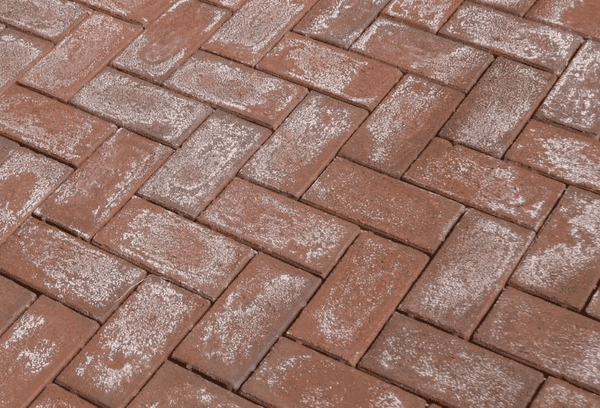
Efflorescence appears as a result of the hardening reaction of concrete. They are prescribed in GOST 17608-2017, and are not considered a defect.
Calcium hydroxide comes to the surface, reacts with carbon dioxide, and is converted to calcium carbonate. The process starts upon contact with water. The formation of salts on the surface of paving slabs is inevitable. But sometimes there is very little plaque, and sometimes a huge amount.
The reasons for the appearance of a large number of efflorescences:
- use of low-quality cement;
- highly porous tile surface;
- high cement content in the underlying layer;
- poor water drainage, high salt content in groundwater;
- long evaporation of water due to the location of the tiles in the shade;
- use of de-icing mixtures.
How to remove: traditional methods
When faced with white deposits on tiles for the first time, most people try to wash them off with water. As long as the surface is wet, the problem seems to be solved.But after drying, the efflorescence appears even more strongly.
Efflorescence is not ordinary salt, which dissolves well in water. To remove white deposits, you will need acid.
Acids neutralize calcium carbonate. What means can you use to remove efflorescence on tiles?
- Vinegar. Pour 9 liters of water into a bucket. Pour 1 liter of 9% table vinegar. Stir. Spread over the surface with a brush. Rinse the track after 30 minutes with water.
- Lemon acid. Dissolve 25 g of citric acid in a glass of warm water. Apply to efflorescence with a brush. Wash off the acid from the surface after half an hour.
- "Coca Cola". Pour Coca-Cola over the white spots. Leave it until the rains wash it away.
Also, at home, soap solutions, car shampoos, and descalers in the kettle are used to remove white deposits on tiles.
Attention! Folk remedies will help if the efflorescence consists of carbonate-type salts. Sulfate, chloride and other compounds are neutralized by more aggressive acids (inorganic).
Store products
Efflorescence does not appear on city sidewalks. This is because professionals wash it after installation with special chemical compounds.
Popular store-bought remedies for efflorescence on tiles:
- "Neomid 550";
- "Tiprom plus";
- “Found Safescreen SAD1”;
- "HG Cleaning agent for paving stones, concrete and paving slabs";
- "Perfecta Anti-vysol"
Such preparations contain a mixture of inorganic acids and surfactants. They are suitable for acid-resistant surfaces. Usually the listed means are used to clean facades.
Before treating paving slabs, it is recommended to test the effect of the drug on an inconspicuous area.
Paving slabs are porous, made from a cement binder and often contain dye.Therefore, interaction between the active components of the composition and the mineral base cannot be ruled out. The tiles may become dull and lose their strength.
Instructions for use
Instructions for use are included with each drug. Surfaces are treated approximately according to the same scheme. To clean paving slabs from white deposits:
- Sweeping trash from the sidewalk.
- The drug is diluted with water and mixed thoroughly. The proportions depend on the degree of contamination of the paving slabs.
- Moisten a brush, foam roller or brush in the resulting solution and moisten the surface. The solution must not be rubbed in. You need to distribute it evenly over the tile.
- Wait 5-10 minutes. At this time, the reaction of the active substances of the drug with efflorescence occurs. A foaming film is formed.
- Rinse the treated area with water from a hose (bucket). It is important to wash off the composition before it dries.
Along with efflorescence, store-bought preparations wash away fresh and old traces of cement and plaster stains, limescale from tap water and other contaminants.
Important! Use tile cleaners only in dry, warm weather. Before processing, wear personal protective equipment: rubber gloves, a respirator mask, and safety glasses.
Consequences - should you worry about efflorescence on the tiles?
GOST states that efflorescence does not affect the strength, frost resistance and abrasion of paving slabs. This is a purely aesthetic problem. White plaque spoils the appearance of the tiles.
Sometimes you can hear the opinion that salts mix with reagents and gases from the atmosphere. The result is mixtures that are harmful to human health when evaporated and destroy the surface of the tile. Science doesn't confirm this.
Questions and answers
How quickly is efflorescence washed away by rain?
Efflorescence is a temporary phenomenon. They may disappear a few months after laying the tiles if the place is sunny and the sidewalk is frequently walked on. In the case where the place is impenetrable and is in the shade most of the time, the white coating can last up to 2 years.
How to prevent efflorescence?
It is necessary to follow the technology of laying tiles and choose high-quality, low-porous materials. After completing the work, the sidewalk should be treated with a wash. Next, special hydrophobic preparations are used. They create a “wet effect” and prevent the appearance of efflorescence and dirt. The hydrophobic coating is updated every six months.
Over time, salts seep through the paving slabs. The appearance of efflorescence is an inevitable process. White plaque does not harm the material, but can greatly spoil its appearance. Most people view efflorescence as part of the road's aesthetics. But if they interfere a lot, you can quickly remove the salts with a special remover or vinegar.
“You don’t need to start a war in your brain from scratch. The sidewalk is a road, not a marble hall. We got around to washing off the efflorescence. If we don’t get there, the rains will wash it away. It’s good when a person has a problem with white residue, and not with how to get to the porch without losing his shoes in the mud.”
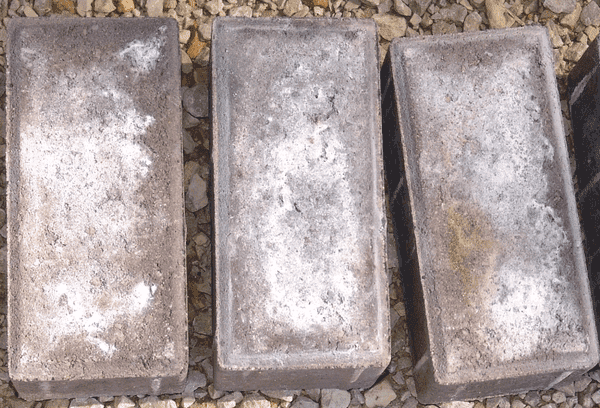
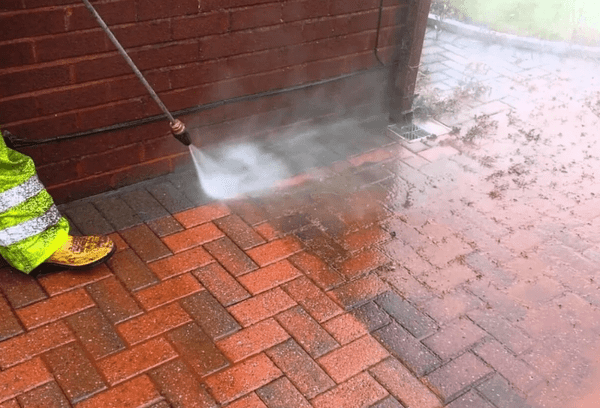
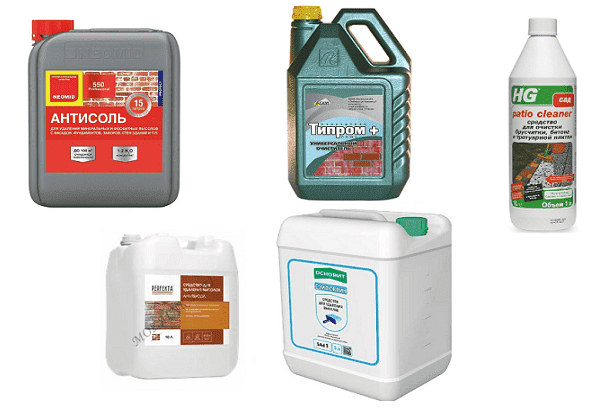
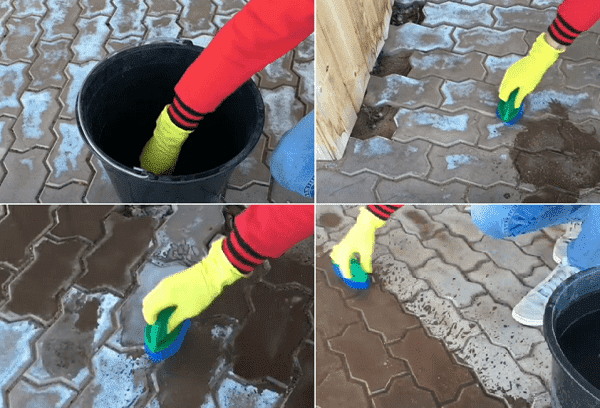
The vinegar solution washed away all the white deposits from the paving slabs. Simple and cheap way.